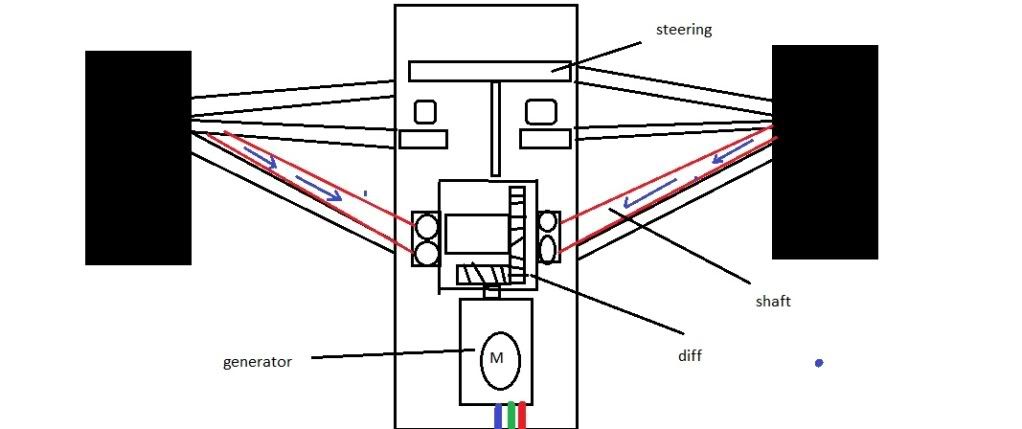Back on topic I sugest that we look at the total weight of the cars ones you have taken the the excess fuel away and fitted the new lighter engines. Assuming a 79% consumption relative to the maximum fuel flow we would get 105 kg of fuel per race compared to 150 kg today. On average the car would have to carry 22.5Kg less during the race. The engines could contribute 30 kg less weight so we could gain 52.5 kg additional weight for recovery technologies to play with.
If they drop the silly push to pass button mode the MGUs could also become more efficient. I see a good chance that they will eventually have an AWKERS system with a total weight of 80 - 90 kg that would collect 4 MJ per lap at 400 kW peak rate, stores 2 MJ and releases 4 MJ at 150 kW average rate. Perhaps that will not come in the first year but 2.3 MJ with the respectively smaller power rates would be realistic.
Such a system would fundamentally change the chassis design as we have already seen. We would have a drive compartment in front or side ways of the driver's safety cell for the front in board MGUs, the power electronics and the heat exchangers. The safety cell would have a cable duct to connect the energy storage facility in the center of the car to the front MGUs. Weight distribution will be very different potentially.
If we look at the weight to energy ratio of our primary power system and the AWKERS I see the following scenario. Total weight of engine with all subsystems 120 kg. Total average fuel weight 57.5 kg. Total primary system weight 177.5 kg. Total mechanical energy at 46 MJ/Kg and 36.5% efficiency is 1763 MJ. Energy/weight ratio would be 9.932 MJ/kg. The AWKERS system would contribute 240 MJ per race at a weight of 85 kg. So the energy/weight ratio would be 2.824 MJ/kg. From an absolute point of view the system would not be worthwhile but from a conservation point of view it would be a good decision. At that point it would already save us another 14.3 kg of race fuel. If we include the KERS effect in our efficiency calculation we find that it increases the total drive train efficiency from 36.5% to 41.5%. That is pretty impressive for any automotive system.
The calculation shows that modern fuel saving engines and turbo compounding should be higher on the agenda than KERS. But KERS also has to make a contribution that should not be rejected. It is smaller than the original hype made it look like but still worthwhile to pursue.
- Login or Register
No account yet? Sign up




